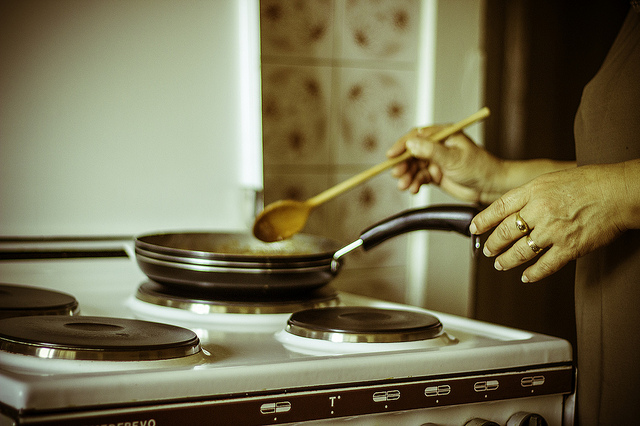
Even among people “in the know,” choosing the right oils can be a challenge.
Here, let’s look at three of my personal favorites—olive oil, coconut oil, and palm oil—and how to make the right decisions.
Olive Oil
In his book Losing Virginity, Tom Mueller takes us through the sublime, scandalous world of olive oil. He discusses how resellers add lower-priced, low-grade oils filled with artificial coloring to extra-virgin olive oil. Unfortunately, most American-derived olive oils contain soybean, rapeseed, and other oils.
When it comes to olive oil (or really, any oil), caveat emptor: Research and pick the right ones. Here are a few strategies to buy the right olive oil:
- Choose unfiltered, which contains naturally occurring elements like antioxidants and buffer acids that create cloudiness but protect against oxidative damage.
- Buy extra-virgin, as it comes from the first pressing of the olives. One study compared extra-virgin olive oil’s anti-inflammatory power from first pressing with later pressings’ antioxidant power. Researchers found extra-virgin olive oil lowered inflammation; non-extra-virgin oils could not.
- Look for cold-pressed olive oil, which means manufacturers use very little heat mechanically processing olives to get the oil. Cold-pressed extra-virgin olive oil provides the strongest possible nutrient value because of low-heat processing coupled with the oil’s first pressing high phytonutrient content.
- Big food companies sometimes use misleading terms like “pure olive oil,” which often signify a mix of unrefined and refined virgin olive oils.
- Avoid extra-light olive oil. Companies love slapping this “light” term on foods because it plays into low-fat fears. These terms subtly suggest all fats are bad and make us fat, yet fats are not bad. Low-fat or “light” foods are typically highly refined and processed.
Coconut Oil
Quality coconut oil should be organic, virgin, cold-pressed, unrefined, and never deodorized or bleached.
Because it’s very stable, coconut oil becomes great for baking and medium-high heat cooking. We can cook with it, add it to meals when cooking meat, sauces and veggies, put it into our smoothies, stir it into hot beverages like tea or coffee, mix it into soups, stir in with nut butter, or just eat it right out of the jar by the spoon full.
Coconut oil contains an outstanding fatty acid profile and provides a great source of medium-chain triglycerides, which I’ve discussed in detail here. I also love coconut butter, such as in this smoothie recipe here.
Palm Oil
Palm oil is a vegetable oil pulled from the palm tree’s fruit. About 85 percent of the world’s palm oil comes from Malaysia and Indonesia.
True, virgin, unrefined red palm oil is naturally reddish in color and comes loaded with vitamins and antioxidants. Refined palm oil, on the other hand, is highly processed and loses its red color as well as its taste and health benefits.
I like red palm oil but avoid refined palm oil. Red palm oil or palm fruit is very nutritious. “Palm kernel oil” or crude oil is extremely processed and used as a food preservative in many popular foods, creating a huge demand for palm oil that has become completely unsustainable.
Look out for the Certified Sustainable Palm Oil (CSPO) label, which ensures the palm oil comes from sustainable sources that encompass social and environmental concerns.
5 Strategies for Buying Oils
We can choose the best-quality olive, coconut, red palm, or really any oil with these five strategies.
- Always choose organic, unrefined, cold-pressed, or expeller pressed. Those terms ensure we’re purchasing a quality, highly nutritious, sustainable product. Organic production prohibits genetically modified ingredients (GMOs) and the use of hexanes for extraction in oils.
- Research the manufacturer. Ensure the product is truly cold-pressed and lives up to its claims and standards, for instance, and that the manufacturer is not using hexanes or other toxic solvents in the refining process.
- Choose oils in dark, not clear, bottles. Darkness protects the oil from direct sunlight exposure, which can create rancidity. Store the oil in a cool, dark place away from heat and light exposure such as cabinets or the fridge in airtight containers. Never store oils on kitchen counters or next to the stove.
- Always tightly close the lid after using. Oxygen can make oil quickly go rancid.
- Purchase the correct size and consume in the time recommended. Remember, oils tend to go bad after a span of a few months or years depending on the type of oil. Research shows, for instance, that even among properly stored olive oils, quality and health benefits decline after two months.
To learn more about the healthy oils and other fats that keep us lean and healthy, check out for my new book Eat Fat, Get Thin.
What are your favorite oils for drizzling, low-heat cooking, and medium-heat cooking? Share yours below or on my Facebook page.
Author: Dr. Mark Hyman
Image: Marjan Lazarevski/Flickr
Editor: Emily Bartran
 Share on bsky
Share on bsky





Read 0 comments and reply